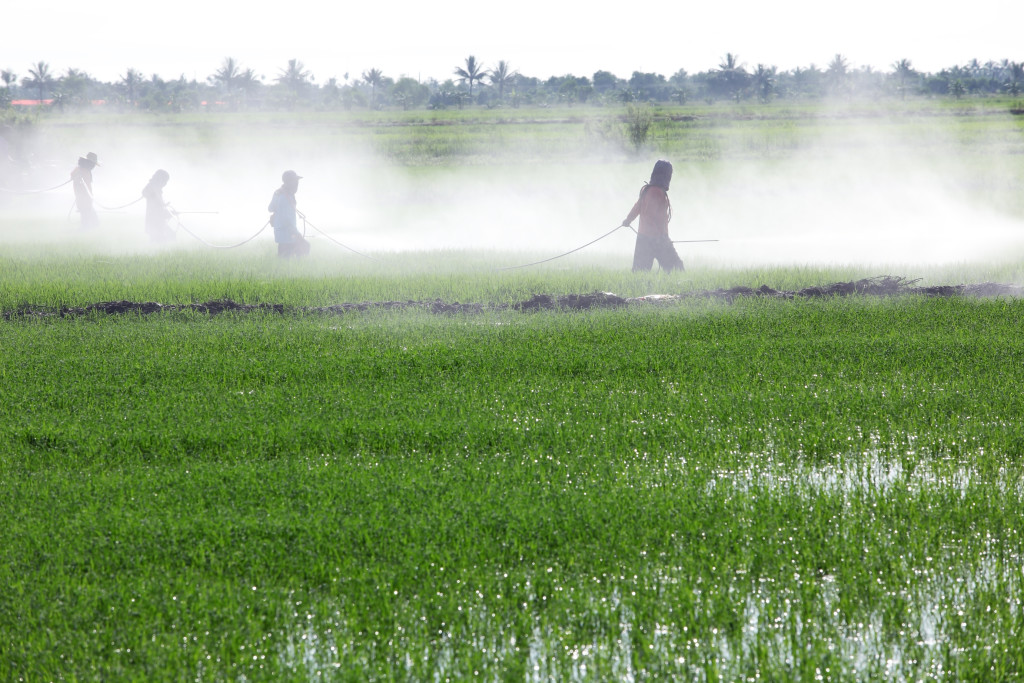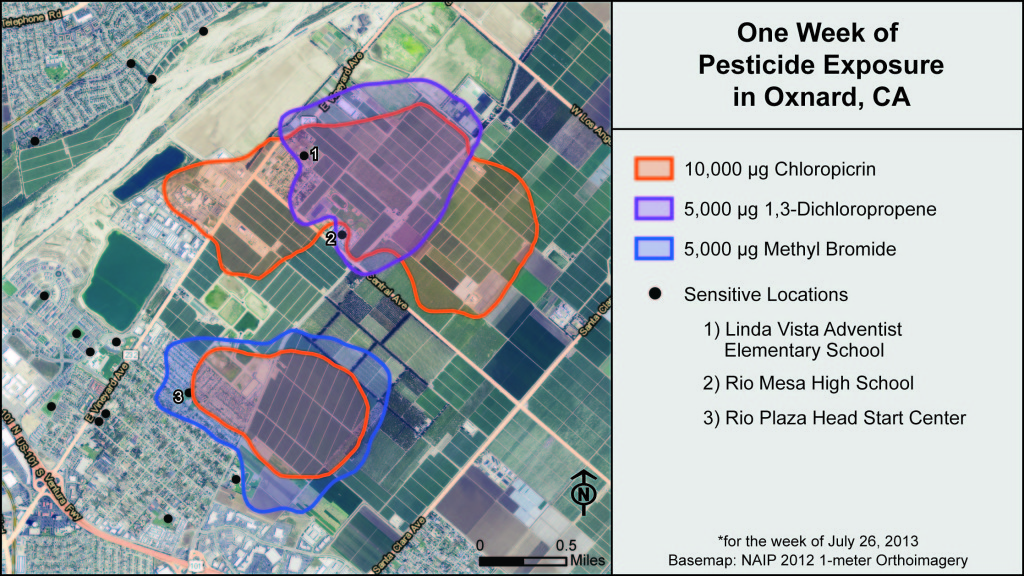The Tricky Problem of Cumulative Exposures
A new UCLA report finds reason to be concerned about cumulative risk, and notes that under CA law regulators are required to act

We are all exposed to hundreds, if not thousands of chemicals through consumer products, air pollution, drinking water, and occupational exposures, just to name a few. Yet chemicals and pollutants are largely assessed and regulated individually. Increasingly, environmental health professionals have been attempting to grapple with assessing the risk of exposure to multiple chemicals.
New research suggests that this concern about possible “cumulative effects,” is warranted. A recent meta-review conducted by hundreds of scientists found that a substantial number of chemicals that were not considered carcinogens actually induced hallmarks of cancer even at levels of exposure that are common in everyday life. These scientists hypothesize that the low level exposures of chemicals that we are exposed to everyday may be leading to increased cancer risk.
As evidence grows that combinations of exposures may conspire to increase human health risk, it leaves legislators and regulators in the position of trying to design ways to address the problem. This seems daunting when piled on top of a chemical regulatory system that is blatantly inadequate, and many believe also struggles with pesticide regulation.
Today, the Sustainable Technology & Policy Program (STPP) at UCLA released a report exploring this issue through a case study. The report looked at three commonly used pesticides in California, and came to three conclusions:
1. The Pesticides May Interact to Increase the Health Risk for California Residents and Farm Workers
All three pesticides are known to be harmful to humans. They all demonstrate some combination of acute, developmental, reproductive, and neurotoxicity. All are carcinogens.
The report goes a step further, assessing whether these pesticides may “interact” to increase the risk to human health. The answer: there is good reason to believe the pesticides may interact to increase the risk of cancer, and further testing is required.
The key word here is “interact.” What little efforts there are to assess the impact of multiple pesticides focus on additive effects–i.e. adding the impacts of the pesticides together. This report suggests that at least these three pesticides may be interacting to make the harm to human health greater than the sum of their parts. This would make the harmful health effects multiplicative rather than additive. Each pesticide has traits that suggest they may do the following:
- Decrease the body’s ability to detoxify by consuming glutathione, a critical detoxification co-factor
- Attack and damage DNA
- Disable DNA repair and expression enzymes

The combined result would be a greater than additive increase in the risk of uncontrolled cell growth, which could lead to cancer
2. Californians Are Regularly Exposed To These Pesticides Together
The question of whether the pesticides interact to increase the risks to human health is not an idle one. As the report shows, people living and working in the state’s agricultural areas are regularly co-exposed to these pesticides.
The three pesticides considered here (chloropicrin, metam sodium, and 1,3 dichloropropene) are fumigants, which means they readily vaporize and drift away from the application site. Often used on high value crops like strawberries, tomatoes, peppers, and tree nuts, the fields they are applied to are often close to homes, businesses, and schools. An interactive map generated as part of the report demonstrates that a number of communities in California face high use of these pesticides.
The report also modeled exposure near Rio Mesa High School, where there is already significant concern about the health effects of pesticides used on the strawberry fields that surround the school. Using EPA’s air modeling software, pesticide use data, and local weather and wind patterns, the report found that Rio Mesa High School, a local elementary school, a Head Start program, and a residential neighborhood were all co-exposed to significant levels of pesticides over one nine day period in 2013 (the latest year for which data was available).

3. The State of California Does Not Regulate the Application of Multiple Pesticides, Despite Having Authority to do so
These pesticides may interact to harm human health, and people are being exposed to them. The question then becomes, what, if anything should be done? On this score, the law is pretty clear.
California’s Department of Pesticide Regulation (DPR) is charged with regulating pesticides (“The director shall endeavor to eliminate from use in the state any pesticide that endangers the agricultural or nonagricultural environment . . . .” CA Food and Agriculture Code section 12824). DPR’s pesticide registration process operates under a functional equivalency from CEQA, which requires the evaluation and mitigation of significant cumulative effects. Therefore, under existing law, DPR is required to assess possible interactive effects when registering (and re-registering) pesticides. There is no evidence this is happening.
The report leaves DPR with three broad suggestions for how to regulate:
- Some pesticides are sold as part of a mixture. These products should be tested for toxic interactive effects before being approved for use.
- Pesticides are often mixed with each other for application on site, are applied shortly after other pesticides, or are applied near other pesticides. Where there is a scientifically reasonable hypothesis of interactive effects regulators should either require testing or impose stringent use restrictions to avoid the likelihood of health impacts.
- Interactive effects of pesticides–occurring either because the pesticides are marketed in combination or because they are commonly used together–must be considered in the risk assessment and in establishing risk management procedures.
Cumulative risk is a thorny problem. Toxicologists know little about how different chemicals interact to change toxicity. The uncertainty of exposure science increases substantially when trying to model more than one chemical/route combination. Yet there are serious potential risks stemming from cumulative exposures. Our legislators thought those potential risks were important enough that they should be considered, and right now our regulatory system is failing to meet that standard.
Assessing and regulating cumulative exposures is going to be challenging and expensive. But so is dealing with the potential public health implications of failing to address them. As our society balances the value provided by pesticides with their costs, cumulative risk must be considered as one of the costs of our dominant, pesticide-based model of food production.






Reader Comments